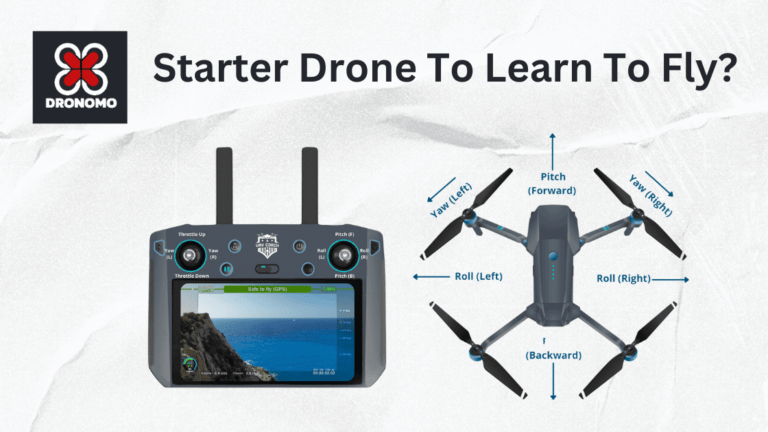
The iPhone 14 is significantly simpler to repair because of Apple’s covert redesign.
The iPhone 14 has garnered attention for its sleek design and impressive features, but one aspect that may be particularly appealing to consumers is its

When it comes to flying a drone, preflight checks are essential. It’s a critical part of the pre-flight process that helps ensure the safety of the pilot, the drone, and any bystanders. Having a drone preflight checklist is the quickest way to ensure that all the necessary safety checks are completed before taking off.
A drone preflight checklist is a set of steps that a pilot must complete before flying a drone. The purpose of the checklist is to ensure the drone is in proper working condition and that all safety measures are in place. A preflight checklist should be used for all drone flights, whether that be outdoor or indoor, recreational or professional.
The steps of the checklist vary depending on the type of drone and the purpose of the flight, but they generally involve checking the drone’s battery, propellers, and control system. Other steps can include ensuring the environment is safe for flying, checking the drone’s sensors and cameras, and reviewing the flight plan.
A preflight checklist is an invaluable tool that helps pilots fly with confidence. By completing the checklist, the pilot can be sure that the drone is ready for flight and that all safety measures have been taken. A preflight checklist also helps the pilot stay organized and focused, reducing the risk of forgetting important steps.
A preflight checklist can also help reduce the risk of accidents. By taking the time to ensure that all safety measures are in place, the pilot can reduce the risk of injury, property damage, and legal issues.
A preflight checklist typically follows the same basic structure for all drones, regardless of the model or the purpose of the flight. The steps of the checklist should be completed in order, one at a time, to ensure that all safety measures are taken before takeoff.
The following is a step-by-step guide to the preflight checklist:
Once all of the steps of the preflight checklist have been completed, the drone is ready for takeoff!
Different drone models may have different preflight checklists. For instance, a racing drone may have different requirements than a photography drone. When flying a specific drone model, it’s important to consult the manufacturer’s guidelines for a detailed preflight checklist.
For beginner drone pilots, it’s important to have a thorough understanding of the preflight checklist. Beginner pilots should take the time to review the preflight checklist and to practice each step until it becomes second nature. This will help ensure that all safety measures are taken before takeoff.
For professional drone pilots, the preflight checklist should be completed with even more attention to detail. Professional pilots should take the time to inspect the drone and the environment for any potential risks. They should also review the flight plan and make any necessary adjustments to ensure that the flight is safe and successful.
The preflight checklist for outdoor and indoor flying is largely the same. However, there are some differences that should be taken into account. For outdoor flying, the pilot should take extra precautions to ensure the environment is safe for flying. This includes checking the weather, ensuring that no obstacles are in the area, and making sure the drone is not too close to any people or animals.
For indoor flying, the pilot should take extra precautions to ensure the environment is safe. This includes checking for any obstacles and making sure that the drone is not too close to any people or animals. The pilot should also make sure that the space is well ventilated to prevent the drone from overheating.
In addition to the preflight checklist, it’s also important to have a checklist for drone maintenance. This includes inspecting the drone for any physical damage, cleaning the drone and its components, and checking the motors and propellers for any wear and tear.
The final step of the preflight checklist should be a safety check. This includes ensuring that all safety measures are in place, such as the use of proper safety gear and the wearing of an anti-collision device. The pilot should also check the drone for any physical damage and make sure that the drone is not too close to any people or animals.
Having a drone preflight checklist is essential for any drone pilot. It helps ensure the safety of the pilot, the drone, and any bystanders. A preflight checklist should be used for all drone flights, whether that be outdoor or indoor, recreational or professional. By taking the time to complete the checklist, the pilot can be sure that the drone is ready for flight and that all safety measures have been taken.
By following the steps outlined in this article, drone pilots can fly with confidence knowing that all safety measures have been taken. So, what are you waiting for? Get out there and take flight with confidence!

The iPhone 14 has garnered attention for its sleek design and impressive features, but one aspect that may be particularly appealing to consumers is its

If you’re in need of iPhone repairs, it’s important to take a few steps before handing your device over to a repair shop or technician.

If you’re interested in learning how to fly a drone, it’s important to know what kind of drone would be best for your skill level.

We are Houston Texas Based Company we provide cellphone laptop drone repair services hardware and software. We have repaired DJI Drones and Apple Cellphones
Dronomo is a Houston, Texas-based company that is devoted to our community by providing good customer service in the form of Cellphone Laptop Drone Repair, and Sales. We have been serving Houston and our surrounding community for more than 13 years; and hope to continue. We offer Mobile Phone service, Home internet; and portable hot spot internet we buy and sell drones and cell phones, we are a group of trained Professionals who can provide you with these Services.
Address : 9769 1/2 Long Point rd, Houston Texas 77055
Phone : +1 713 647 0009
Email : [email protected]
Copyright DRONOMO © 2022. All rights reserved.